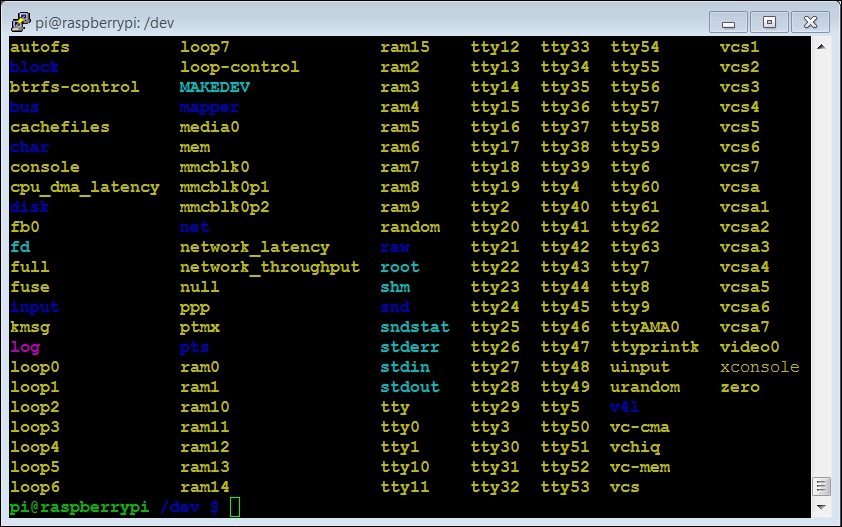The first step in enabling computer vision is connecting the USB camera to the USB port. I am using a Logitech C110 camera in my example. To access the USB webcam, I like to use a Linux program called guvcview. Install this by entering sudo apt-get install guvcview.
Connect your USB camera and make sure your LAN cable is plugged in. Then, apply power to Raspberry Pi. After the system is booted, you can check to see if Raspberry Pi has found your USB camera. Go to the /dev directory and type ls. You should see something as shown in the following screenshot:

Look for video0, as this is the entry for your webcam. If you see it, the system knows your camera is there.
Now, let's use guvcview to see the output of the camera. Since it will need to output some graphics, you either need to use a monitor connected to the board, as well as a keyboard and mouse, or you can use vncserver as described in Chapter 1, Getting Started with Raspberry...



